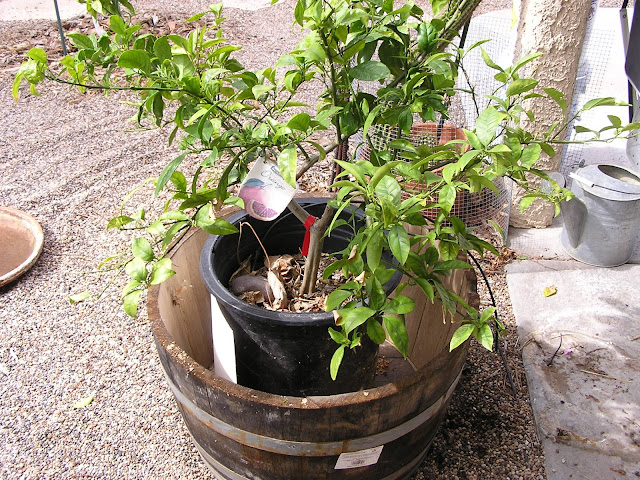Q. Because of the winter cold weather, I move my citrus trees growing in containers into my garage where it never gets below 40. I added three fluorescent lights fixtures with grow lux bulbs per light fixture and they are hanging a few inches above the trees. Will this be sufficient light to keep the trees from being starved for light?
A. Although it’s less intense than outdoor sunlight this
will work. I’m guessing you keep these citrus trees in your garage all winter
long. But I’m wondering if you even need all that!
 |
| Interior of a peach flower showing the ovary. A fresh, good looking ovary after a possible freeze tells you it will probably produce a fruit. |
Winter freezing temperatures low enough to kill flowers normally start around
mid-December. Usually by mid-February these temperatures are over. Although
rare, sometimes we never experience freezing temperatures anywhere in the
valley. Infrequently these temperatures are “patchy” and can start in
mid-November (as they did in 2020) and can stretch into mid-March (as they did
in 2021).
Recording Thermometer
 |
| Inexpensive recording Taylor thermometer with two temperature probes. It used to run about $12. |
 |
| Accuweather app for cell phone |
Do you see why I recommend
putting a recording thermometer in your landscape! I also recommend downloading
a weather app on your phone for predicting upcoming freezes.
Different landscapes experience
different temperatures. Oftentimes these different landscapes follow different
weather patterns. These weather patterns determine your level of success in our
climate. It would be much simpler for growing citrus if our climate was colder
or warmer. But it’s not.
Low Light Levels Can Substitute for High Light Levels
I’m also wondering if your
citrus even need the extra light. If temperatures are cold in your garage then
the entire plant goes into “hibernation” and there is little need for light.
For many plants this “magic temperature” is around 40 to 45° F. Also, the
darkness inside the garage can delay flowering.
Because the intensity of light
is so low, I would leave these lights on for 16 to 18 hours every day.
Long-term low light accumulation can sometimes substitute for short-term
highlight intensity (think sunlight). Because of these long light intervals, you
might see earlier flowering in these trees.





















